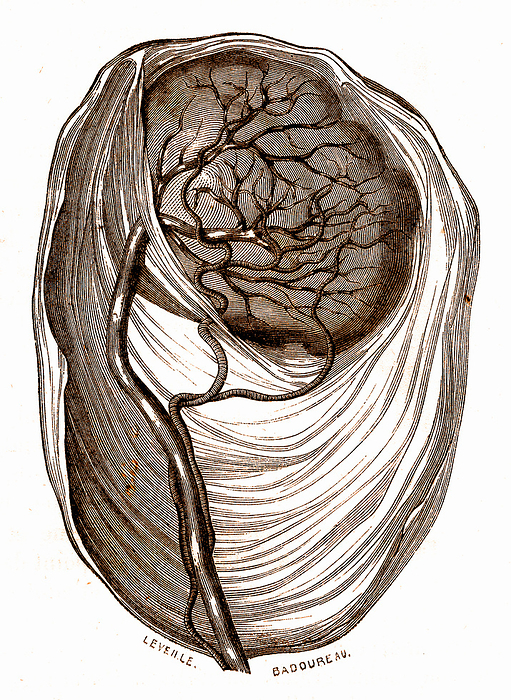
RM
Marginal cord insertion of the placenta, 19th century illustration
Illustration showing a marginal cord insertion of the placenta. The placenta is the temporary organ that connects a developing foetus to its mother via the umbilical cord. Usually the cord is attached to the centre of the placenta, but in a marginal cord insertion it is attached at the edge. This attachment can lead to complications including preterm delivery, foetal growth restriction and foetal distress. From New Dictionary of Practical Medicine and Surgery by Dr Jaccoud Vol. 9 (1869)., by COLLECTION ABECASIS/SCIENCE PHOTO LIBRARY

More
Top Categories
